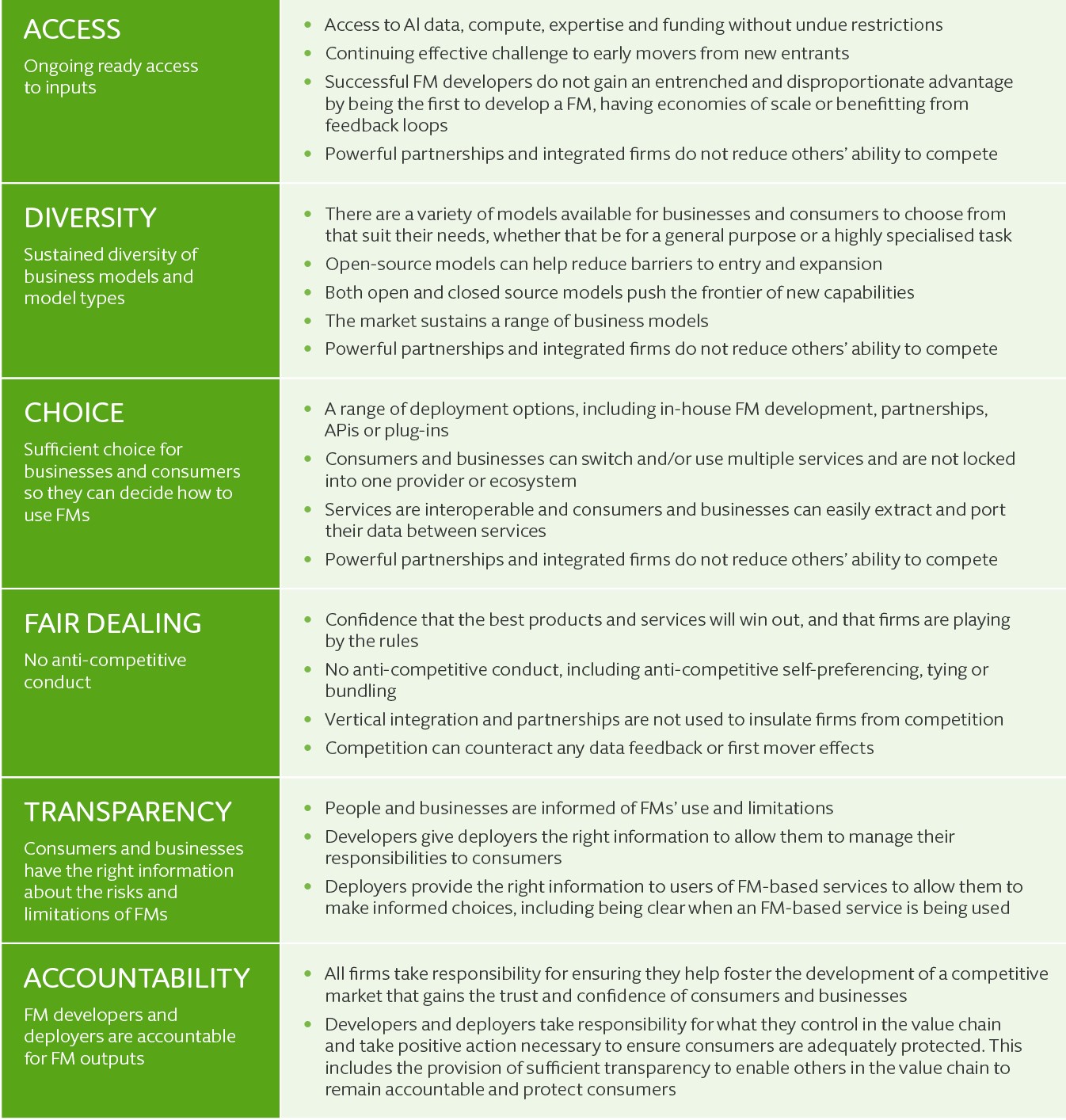On 11 April 2024, the Competition and Markets Authority (“CMA”) published its AI Foundation Models Update Paper (“Update Paper”), which builds on the principles it set out in its “Initial Report” last September (see here for our overview of the Initial Report). An accompanying “Technical Update Report” was published on 16 April 2024 providing further details on market developments and stakeholder engagement, see here.
By way of context, the foundation model (“FM”) sector is responsible for developing much of the generative AI models currently available on the market (where generative AI is essentially algorithms that can be used to create new artificial content).
Observations from the Update Paper
The CMA finds that there has been rapid change in the Foundation Model (“FM”) ecosystem even since its Initial Report:
- Customers and businesses are increasingly engaging with generative AI; this is underscored by an ever rising number of publicly available FMs, which are “increasingly capable and complex” in nature.
- FM development hinges on the availability of computing power, data and expertise, to which large technology companies typically have greater access.
- FMs are being released on a range of platforms and integrated in an increasing number of digital products and services.
- The FM “value chain” is increasingly interconnected, though a combination of vertical integration, partnerships, and strategic agreements between firms.
The CMA’s updated toolkit
In light of the evolution touched upon above, the CMA has updated and refined its list of “AI Principles”, which were proposed in the Initial Report as a guide for the FM sector towards positive outcomes for businesses and consumers.
They are set out within a graphic produced by the CMA, which we have reproduced below:

Compared to the previous report, the updated Principles place a greater emphasis on the need to monitor “powerful partnerships” and “integrated firms” to safeguard against a reduction in competition. In addition the previously standalone principle of “flexibility” has been combined with “choice”. Notably, while there is overlap with the UK government’s own central set of principles relating to AI, the CMA’s are more specific and focused on their key functions of competition and consumer protection.
Three key risks
The CMA is principally concerned that the FM space is allegedly occupied by a small number of technology firms and that, if left unchecked, these firms could leverage FMs to “shape FM-related markets in their own interests”.
The CMA outlines three “interlinked” risks to “fair, open and effective competition”:
- The firms with control over "critical inputs" for FM development (such as data and technical expertise) could restrict access to these inputs to protect themselves from competition and bolster their position in the market;
- These firms could distort the choice of available services in the FM sector and competition in their downstream deployment by exploiting their control over important routes to market; and
- Partnerships between “key players” in the FM value chain could be leveraged to strengthen existing positions of market power.
The CMA’s approach – what steps are and will be taken?
In light of the risks that it has identified, it is evident that the CMA is taking a proactive approach to understanding and monitoring the development of AI (including FM but also more generally). The Update Paper refers to a number of current and potential future actions by the CMA:
- The CMA is conducting a number of investigations to aid its understanding of the competitive conditions that exist in the public cloud infrastructure and AI accelerator chip space.
- The CMA suggests it will use its powers under the Digital Markets, Competition and Consumers Bill, once that legislation comes into force. Whilst provisional decisions have not yet been made, the CMA states that it will consider FM-related market developments when deciding which digital activities to investigate under its new powers.
- To combat its perceived risk of further entrenchment posed by current and emerging partnerships the CMA indicates that it will “step-up” its use of the merger control regime to review partnerships more generally. Indeed, the CMA is already conducting investigations into current partnerships to better understand their competitive effect.
- In the sphere of consumer protection, the CMA indicates that it will step up its advisory role; notably, it proposes the potential issuance of “proactive guidance” for firms active in AI-related markets. This would aim to clarify issues of compliance with consumer law, particularly where there are areas of uncertainty.
Next steps
The CMA will provide a further update on its FM work in Q3 2024; it also emphasises that its programme of work on AI will continue throughout 2024, including joint research under the auspices of the Digital Regulation Cooperation Forum (the body in the UK established to ensure greater cooperation between agencies on online regulatory matters).
Publication of the Update Paper and the work programme demonstrate the level of the CMA’s interest and the pace with which it is progressing its work on FMs and AI more generally – as well as how it is collaborating with other regulators and Government more broadly as they grapple with how best to regulate AI in the UK. As such, it is a timely reminder for businesses active in this area to keep a close eye on developments in the legislative and regulatory sphere.